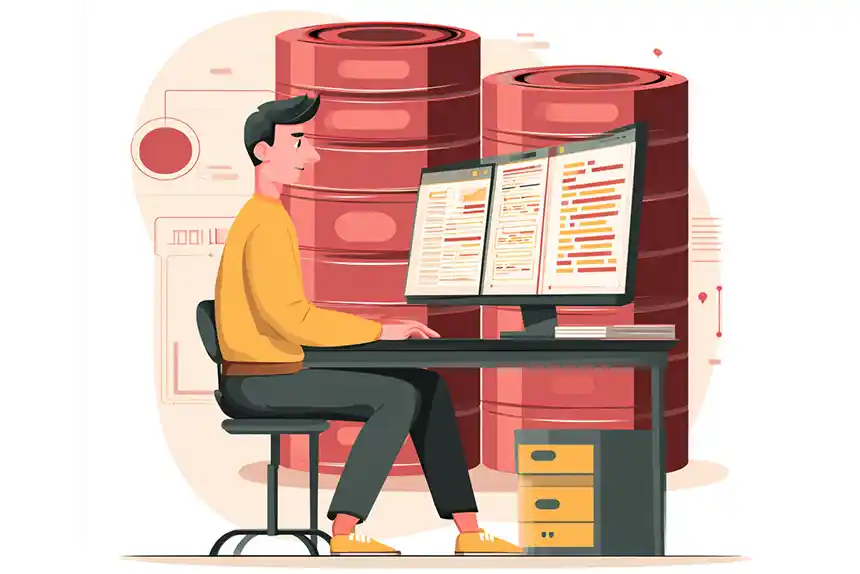What Is Digital Experience Composition?

Amanda Jones

Sometimes the content management and digital experience space can feel like a game of buzzword bingo, from MACH to headless CMS to composable DXP and now to digital experience composition (DXC) and everything in between.
The reality is that increased customer expectations, new practitioner requirements, and evolving technologies drive these changes, and enterprises must find ways to respond. Through digital experience composition, enterprises can achieve the benefits of composability with capabilities to easily design and deliver digital customer experiences using no-code tools and best-of-stack components.
In this article, we’ll explain what DXC means, its benefits, and how brands can leverage the features of a headless CMS like CrafterCMS to gain the advantages of digital experience composition.
What Is DXC? (Digital Experience Composition Defined)
Digital experience composition is a seamless way to handle digital experience development and delivery using headless, decoupled, and composable tools. It extends from frontend as a service and no-code tools and visual page builders, to packaged business capabilities, to orchestration and discovery of API-driven solutions.
DXC can be used to compose digital experiences from best-of-stack components such as search, content, commerce, personalization, analytics, and more. For business practitioners, DXC ultimately enables them to streamline day-to-day activities and increase productivity.
Why DXC?
DXC has risen due to the shifting business landscape, which is moving away from legacy applications that might offer a wide range of capabilities but are often not built for the modern cloud environment, are hard to update, lack adaptability, and are difficult to scale.
Moreover, enterprises are moving away from legacy tools and bulky suites that also provide several features but may not be the leading solutions in their specific capability. DXC offers a step toward full composability, enabling the packaged business capabilities (PBCs) necessary for a composable experience where enterprises can choose the best tools for the job without being constrained by vendor lock-in.
DXC vs. DXP vs CMS
Since DXC is a newer term in the digital experience space, many may wonder how it differs from a CMS or DXP.
A CMS is a packaged business capability that enables businesses to create, edit, manage and publish content. When it comes to modern digital experiences, the CMS typically sports a headless architecture, allowing content to not only be created for one channel, such as a website like it would be with a traditional CMS, but also, to be created and delivered to any channel whether that means a mobile application, shopping experience, digital assistant, VR headset or any another digital experience.
Digital experience platforms are available in two options, monolithic or composable, and include a CMS as one of the core components. A monolithic (or suite) DXP is an all-in-one solution that offers a suite of tools for managing digital experiences. However, these systems are tightly coupled, forcing businesses to pay for multiple tools, many of which they don’t use, and many of which are not best in class.
On the other hand, a composable DXP allows businesses to select the different software solutions that make up their technology stack. They can pair the CMS with a best-of-stack commerce solution, marketing automation tool, and others. Composability, while hugely beneficial for businesses, typically needs significant development and architectural expertise to be effective. This could restrict business users’ control, particularly those accustomed to more traditional, suite-based, or tightly coupled solutions.
With a DXC approach, however, it ensures not only the benefits of composability which include avoiding vendor lock-in and the ability to select best-of-stack capabilities, but it also gives business users more control over everything they need to launch digital experiences.
DXC enables businesses to compose their own DXP from services offered by different vendors. Enterprises should not rely on a single technology or vendor to truly leverage the benefits of composability. This way, DXC becomes the point of orchestration rather than the central point of failure. As such, technology leaders can build their DXP accordingly.
How Does DXC Work?
Digital experience composition relies on three components: frontend as a service, an experience builder, and an API orchestration layer. The combination of these components facilitates the creation of a powerful DXC solution.
Frontend as a Service (FEaaS)
The FEaaS component is meant to offer a browser-based digital experience as a service solution aimed at frontend developers. It provides the tools to make building SPAs, PWAs, and other digital experience applications, easier. With the help of cloud-based vendors, developers can leverage REST or GraphQL APIs to connect to different solutions that help power digital experiences.
Experience Builder
The experience builder gives business users the freedom and flexibility to create UIs and author content with the help of visual drag-and-drop tools and WYSIWYG editing interfaces. This capability is supported by reusable plugins and PBCs, allowing both the authoring experience to be tailored to what the content teams need, and the end-user experience to be easily created and optimized by the content teams themselves.
API Orchestration Layer
The orchestration layer enables connections between multiple technologies and facilitates the discovery and integration of best-of-stack PBC, with the goal of easily creating composable digital experiences. Usually these PBCs are headless systems, such as a headless commerce back-end, a headless CMS, and so on. Legacy CMS platforms with proprietary plugin ecosystems, such as WordPress or Drupal, can’t be classified as composable or DXC solutions. For DXC, the orchestration layer must be capable of working across multiple systems and vendors, meaning that the plugins are able to communicate with each other and not just a single core vendor.
Read More: On Building a Composable DXP
Benefits of DXC
There are several benefits for brands that want to adopt digital experience composition.
Customizable Digital Experiences
Enterprises can create customer-first experiences that aren’t limited by a predetermined set of tools. Instead, organizations can configure components, layouts, content, and other aspects of the experience in any way they see fit. Additionally, they can launch experiences on any channel where customers need to be targeted.
Empowered Business Users
Business users are key resources in driving digital experiences that consumers love, particularly for enterprises that focus on innovation. DXC enables these business users to innovate quickly, and provides the tools developers need to continually develop, integrate and deploy the underlying software features (CI/CD). The end result is a dramatic increase in overall enterprise productivity.
Faster Time to Market
Since business users are now empowered, DXC enables brands to go to market faster, to respond to changes faster, and to optimize customer value faster. Campaigns can be launched across multiple channels without content authors and marketers feeling like they need help from developers whenever they want to do something new.
Reduced Vendor Lock-In
Monolithic DXPs can provide companies with the benefit of only having to select one vendor to power the digital experience. However, this ends up only being a half-truth as these DXPs lack the best-of-stack capabilities that modern businesses expect, and lock businesses into working with a single vendor. DXC solutions reduce this vendor lock-in, enabling companies to select the best vendors and technologies for every packaged business capability.
How CrafterCMS Enables DXC for Enterprises
Digital experience composition helps enterprises implement composable digital experiences at faster speed and higher productivity. Key to any modern composable digital experience is a headless CMS, and that’s where CrafterCMS fits.
CrafterCMS serves as the central content management system within any DXC solution. In addition to providing the headless content repository, CrafterCMS provides these extra capabilities that are critical for any DXC:
- Front-end developer support for any and all technologies with comprehensive APIs (REST, GraphQL, templating, and more) and elastically scalable, serverless content delivery.
- Visual, drag/drop experience building tools for content teams to compose experiences on any channel and for any technology that the developers choose.
- Extensible APIs (in Groovy and Javascript) and orchestration layer for easily aggregating and integrating pre-built plugins and third-party, best-of-stack PBCs (commerce, analytics, DAM, PIM, etc.).
- Decoupled, API-first content authoring and content delivery systems, for composing both authoring experiences and end-user experiences.
- Built-in search engine and APIs for both the content authoring system and for building dynamic, content-driven end-user experiences.
- A marketplace of open source plugins, blueprints, and PBCs.
- APIs for plugging in other third-party DXC components, whether they may be FEaaS, visual builders, or orchestration and discovery layers, as may be desired.
- Open source license
Learn more about digital experience composition, and how CrafterCMS enables DXC for major enterprises, by watching our recorded webinar now: Building Composable Digital Experiences.
Related Posts

How Should You Structure a Blog Post So AI Models Actually Cite It?

Amanda Jones

Publishing Content from Crafter Studio to External Systems and Databases

Sara Williams

Websites Are Dead?

Mike Vertal

No-Code Experience Building for Marketers & Designers

Amanda Lee










